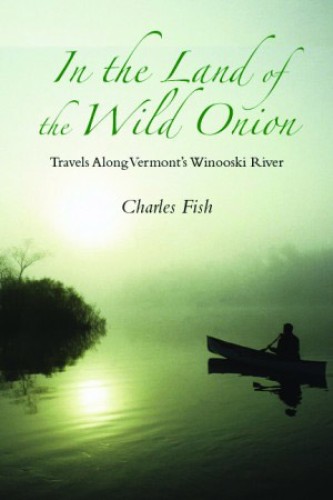by By Charles Fish
University of Vermont Press, 2006
The Winooski River runs in a generally northwesterly direction through northern Vermont, connecting, among other towns, Montpelier, the state capitol, with Burlington, the state’s largest city, before emptying into Lake Champlain. The river is some 90 miles (145 kilometers) long and is fed by a watershed of almost 1,100 square miles containing a complex mosaic of woodlands, farms, urban areas, and industries.
This biography of the present river and its basin represents a virtually seamless tapestry of cultural geography, regional history, and environmental science. It is a case history par excellence of the reciprocal influences of human society and the natural environment – the inexorable interactions between “man and nature,” to borrow a 140-year-old phrase from that renowned Vermonter, George Perkins Marsh. Indeed, the author properly stresses here and there the virtual absence of true wilderness and the need for enlightened and dedicated land management to maintain something that approaches a balanced world.
The author grew up in Essex, a town along the river some 10 miles from its mouth, and retains many fond childhood memories of hiking, fishing, and hunting along the river. Now, many years later, he has twice walked and canoed the entire length of the river, faithfully and charmingly recording his current adventures, both aquatic and riparian, at the same time weaving in his childhood reminiscences and much more as well.
It soon becomes evident that this work is the product of a most intelligent, highly educated, and extraordinarily inquisitive mind. The author makes every attempt for the reader to learn all sides of the many river-related policy issues – whether routine, contentious, or intractable – based on his extensive research (using more than 230 published sources) and through the eyes of those many superbly chosen informants upon whom he leans. Although the author’s formal education (culminating in a Princeton Ph.D.) and subsequent academic career were in the humanities, he has in recent years taught himself about earth sciences, wildlife management (both theoretical and practical), civil engineering, and farming (both traditional and organic), all of which are background for his many observations. Among other relevant subjects, we are offered generally first-rate and highly readable primers on geology (both deep and surficial, including glacial action and fluvial geomorphology), stream ecology, hydropower, dairy farming, hunting, trapping, trout fishing, tracking, and Vermont’s aboriginal population. Included is a poignant history of an artisanal sawmill – so that, all told, forest-related activities in the watershed take up more than a quarter of the book.
A substantial number of river and river-basin “biographies” have been published over the years, including a number specifically relevant to Vermont – among them even a prior one on this particular river: Ralph Nading Hill’s 1949 The Winooski: Heartway of Vermont. But none is as erudite, informative, and gracefully written as this one. The author’s contribution is clearly in the tradition of Claudio Magris’s 1989 river basin classic, Danube. To stress once again, what the author captures so magnificently is the complexity and importance of the inescapable interactions between human actions and the natural world – an achievement that suggests to me that this book should be read, enjoyed, and digested by college students and other scholars of ecology, geography, and environmental conservation far beyond the borders of Vermont and New England.


